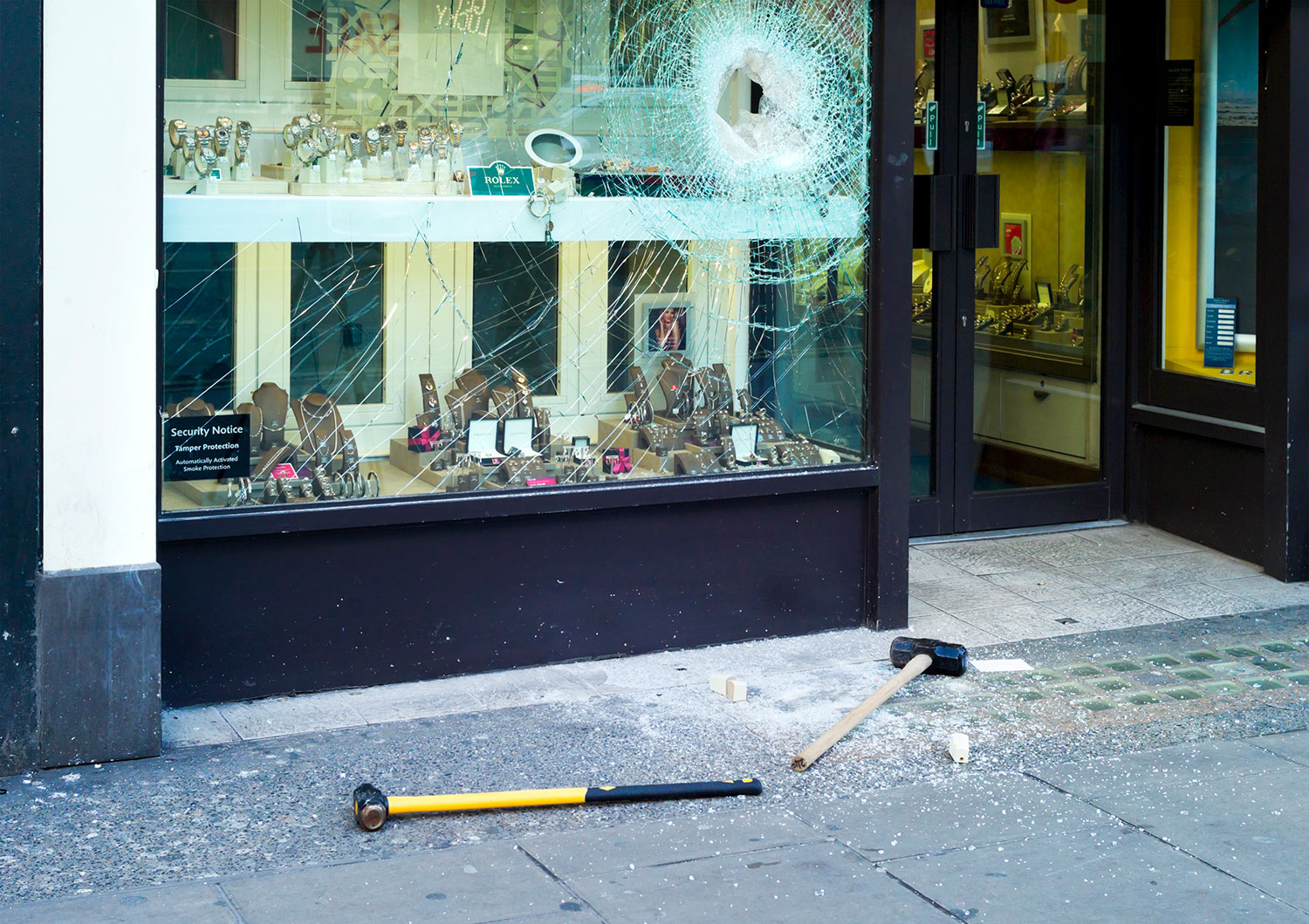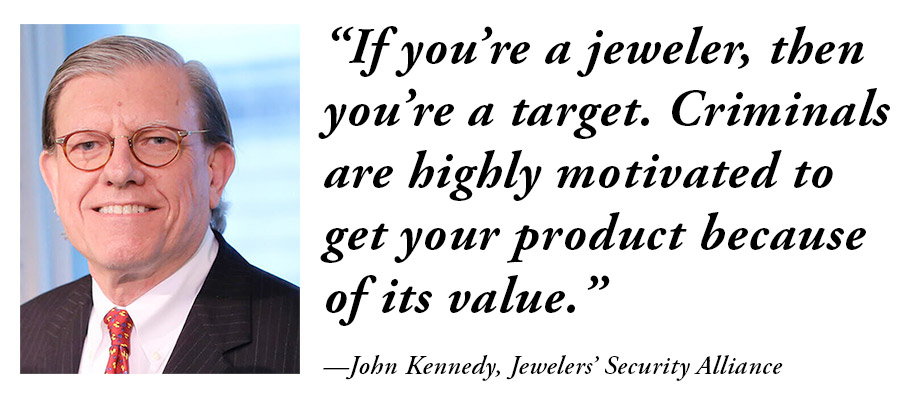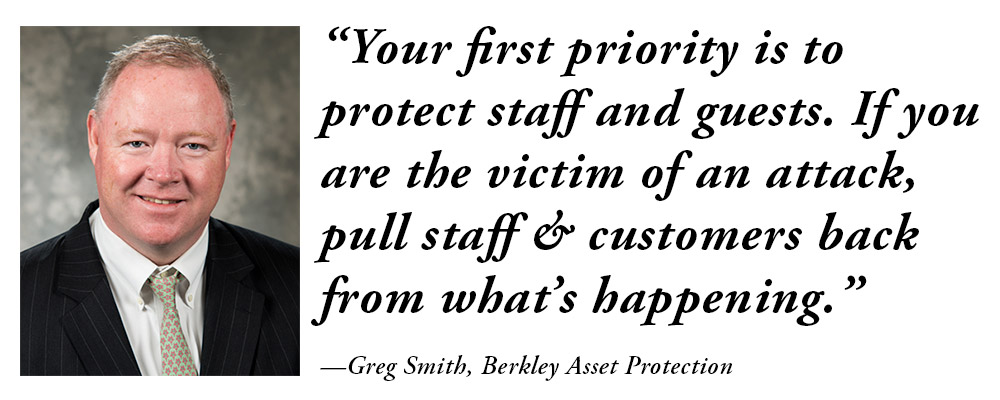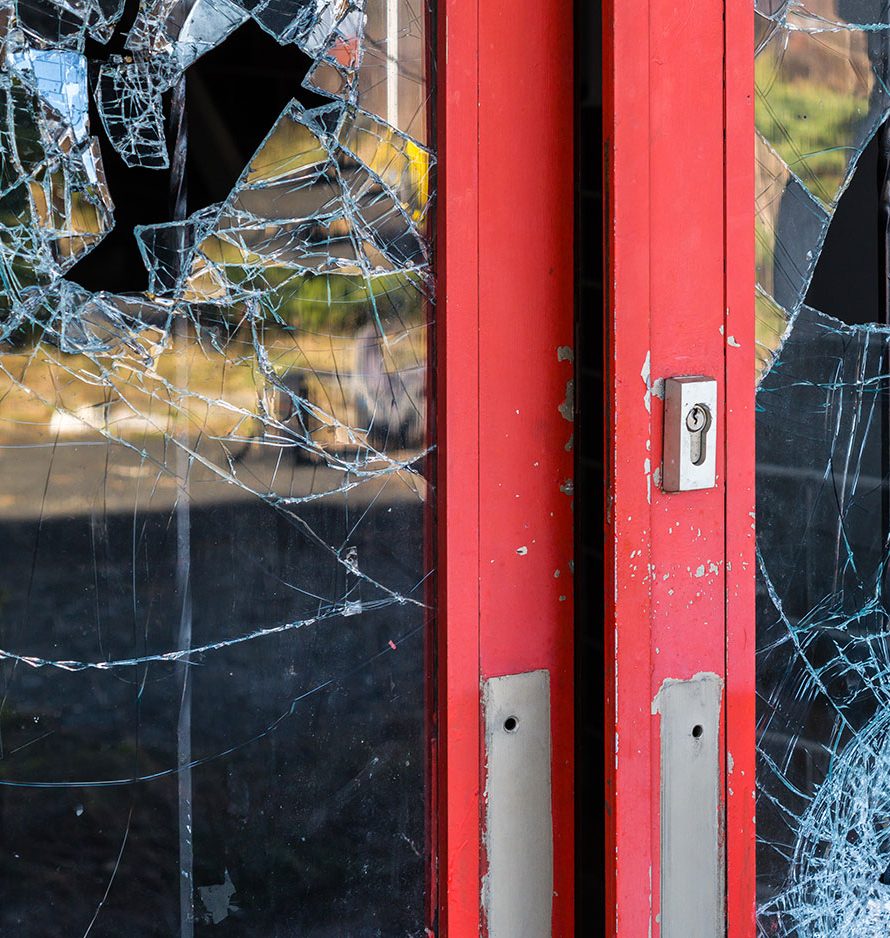While jewelry stores have long been targeted by criminals, more organized and brazen thieves are forcing retailers to find new and creative ways to minimize risk and safeguard their operations
On a seemingly routine Monday evening in November at Sunvalley Shopping Center in Concord, Calif., a group of nine individuals entered the Iceberg Diamonds jewelry store wielding hammers.
Over the next few minutes, the group terrorized staff and customers, breaking the retailer’s glass cases with such force that some mallgoers called 911 and mistakenly reported gunshots. According to local police, the suspects escaped with valuable merchandise.
Less than a week later, Sam’s Jewelers at Southland Mall in Hayward, Calif., about 35 miles south of Concord, endured a similarly audacious attack. Police say that at about 5:30 p.m. on Sunday, Nov. 21, eight to 10 people ransacked Sam’s with sledgehammers before making off with inventory. No injuries were reported in the two robberies.
Pair these incidents in California with similar tales from Boston area jewelry stores—not to mention the headline-grabbing flash mob attacks at department stores and luxury retailers across the country, including Nordstrom, Louis Vuitton, and Neiman Marcus—and it’s clear why retailers are alarmed.
“Whether it’s a flash mob or an organized group, the fear for the business is the same,” says John Kennedy, president of Jewelers’ Security Alliance, a New York City–based organization that educates and informs jewelers about security issues.

Combating the criminals, protecting the business
While smash-and-grabs are, unfortunately, nothing new for jewelers, today’s bandits are displaying a startling level of organization and brazenness, says Greg Smith, executive vice president at Berkley Asset Protection, a leading provider of insurance products and services for jewelry businesses.
“There are more people, and right down to the getaway, they have tools and a plan when they go in,” Smith says, noting that simple forms of communication like text messaging and social media have enhanced criminals’ ability to assemble and strike.
And though such incidents tend to be more commonplace in larger metro areas, Smith says no jeweler “is immune to this scenario.”
Although jewelers cannot control the nefarious actions of others, they can take steps to minimize their risk, safeguard the individuals in their stores, and shield their valuable inventory. A thoughtful blend of strategic investments and basic security practices—some requiring only attention to detail, and not a dime of spending—can help jewelry retailers protect their businesses, their staff members, and their customers.
 Invest in stronger glass.
Invest in stronger glass.
It’s a significant undertaking for any jeweler, but investing in burglary-resistant glass—for both cases and windows—can minimize damage and loss in the event of an attack. Such materials can withstand multiple heavy strikes with a hammer, Kennedy explains, which hampers a criminal’s ability to smash, grab, and depart quickly.
Control store access.
A buzzer system for store entry limits who can come into the store, but that alone is not enough. Placing that entry button near a live video feed—one that shows who is at the door as well as who might be standing around the corner—allows staff to make more informed decisions about store access.
Spread out high-value inventory.
Rather than consolidating your most valuable inventory in a case or two, scatter those items among numerous cases, preferably in the rear of the showroom and far from any exits. This strategy will not prevent theft during an attack, but it will minimize the losses, Kennedy says.
 Mind the windows.
Mind the windows.
Keep front doors and windows clear of obstructions, so staff can see out and others can see inside the storefront. And though jewelers understandably need to showcase items to sell product, they might highlight the look of a beautiful ring in their front window using a CZ rather than a diamond. This can still attract customers without putting a valuable piece at risk, Smith says.
Always acknowledge customers.
Greeting someone upon entry is not only a wise customer service practice, but also a savvy security play. “It lets every guest know you’re paying attention, and that you know they’re in your store,” says Larry Spicer, vice president of loss prevention and risk at Jewelers Mutual Group, an insurance provider based in Neenah, Wis.
See something, say something.
If something seems atypical, such as three to four men entering a store together, have a plan to discreetly put staff on alert. A simple code word or phrase often does the trick. The “threat” might be no threat at all, but vigilance is never a bad thing.
 Track concerns.
Track concerns.
In many smash-and-grab activities, the victimized stores were previously cased, says Don Elliott, director of claims at Jewelers Mutual Group. He recommends each store maintain a logbook of suspicious activities that includes information about individuals who entered the store and acted suspiciously or asked questions beyond those of a typical buyer. Record that information, he suggests, and save the video.
“The suspicious-incident logbook and related collaboration among store employees will allow for an accurate and prompt response if those parties return to the store,” Elliott says.
We can’t promise that you’ll be immune to smash-and-grabs if you follow the tips noted above, but doing so will ensure that you mitigate the potential damage—financial as well as psychological—such an attack would inflict on all of your business’ myriad stakeholders.
 How to Handle A Smash-and-Grab During Operating Hours
How to Handle A Smash-and-Grab During Operating Hours
While smash-and-grab heists often take place outside of store hours, many others, as recent media reports demonstrate, occur during seemingly mundane workdays. Such events bring added concern because they put staff and customers at risk.
Security and loss-prevention experts offer the following pointers for handling attacks during operational hours.
1. Protect human life by pulling staff and customers back from the attack.
2. Don’t resist, stop, or intervene; the criminals can be armed beyond what’s visible in their hands.
3. Wait until the suspects leave before hitting the panic button. Doing so earlier can stir alarm among the perpetrators and endanger the well-being of staff and customers.
4. Lock the door when the attackers leave.
5. Dial 911 and report the crime.
6. Resist the urge to clean up immediately. Allow law enforcement to arrive and capture all necessary evidence, including video, witness statements, and remnants from the attack, such as blood samples or tools.
(Smashed doors at top: Getty Images)
